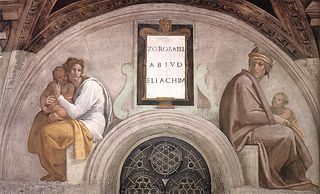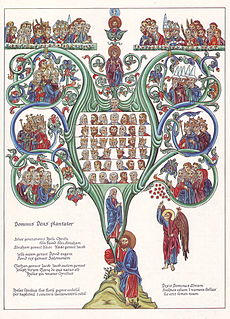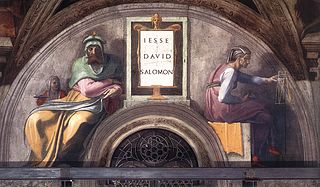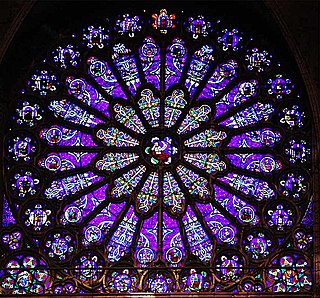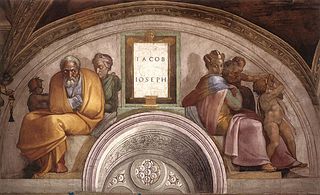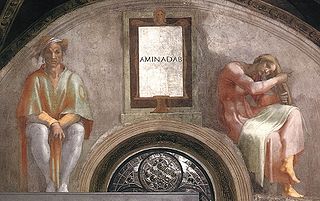| Matthew 1:4 | |
|---|---|
← 1:3 1:5 → | |
 Michelangelo's Aminadab | |
| Book | Gospel of Matthew |
| Christian Bible part | New Testament |
Matthew 1:4 is the fourth verse of the first chapter in the Gospel of Matthew in the New Testament. The verse is part of the section where the genealogy of Joseph, the legal father of Jesus, is listed.

Matthew 1 is the first chapter of the Gospel of Matthew in the New Testament. It contains two distinct sections. The first lists the genealogy of Jesus from Abraham to his legal father Joseph, his mother's husband. The second part, beginning at verse 18, provides an account of the virgin birth of Jesus Christ.

The Gospel According to Matthew is the first book of the New Testament and one of the three synoptic gospels. It tells how the promised Messiah, Jesus, rejected by Israel, is killed, is raised from the dead, and finally sends the disciples to preach the gospel to the whole world. Most scholars believe it was composed between AD 80 and 90, with a range of possibility between AD 70 to 110. The anonymous author was probably a male Jew, standing on the margin between traditional and non-traditional Jewish values, and familiar with technical legal aspects of scripture being debated in his time. Writing in a polished Semitic "synagogue Greek", he drew on the Gospel of Mark as a source, and likely used a hypothetical collection of sayings known as the Q source, although the existence of Q has been questioned by some scholars. He also used material unique to his own community, called the M source or "Special Matthew".

The New Testament is the second part of the Christian biblical canon, the first part being the Old Testament, based on the Hebrew Bible. The New Testament discusses the teachings and person of Jesus, as well as events in first-century Christianity. Christians regard both the Old and New Testaments together as sacred scripture. The New Testament has frequently accompanied the spread of Christianity around the world. It reflects and serves as a source for Christian theology and morality. Extended readings and phrases directly from the New Testament are incorporated into the various Christian liturgies. The New Testament has influenced religious, philosophical, and political movements in Christendom and left an indelible mark on literature, art, and music.






